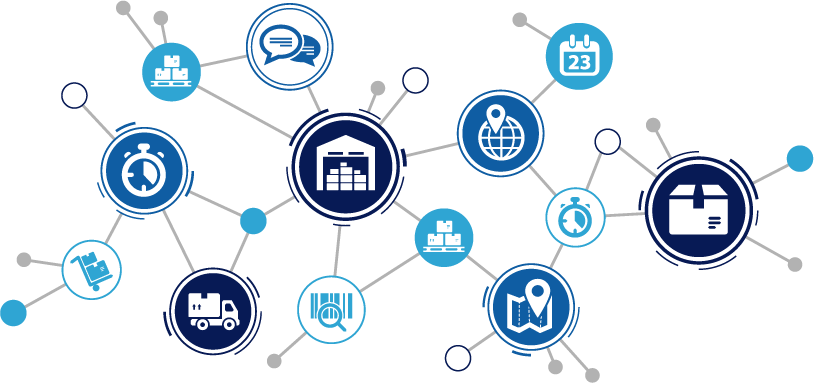How Technical Debt Weighs Down Efforts to Innovate - And How to Resolve It
Disruption is driving demand for more and faster innovative apps. Ironically, building the new app is not the biggest problem. It’s supporting or modernizing old, bad sloppy or broken code. To explore this issue of ‘technical debt’ IDN speaks with OutSystems CEO Paulo Rosado.
by Vance McCarthy
Tags: AI, apps, disruptive, legacy, OutSystems, SaaS, technical debt,

CEO

"Few business leaders fully grasp the causes of technical debt and the burden it places on their ability to compete."
Architecture Summit
 Enterprise-Grade Integration Across Cloud and On-Premise
Enterprise-Grade Integration Across Cloud and On-PremiseGartner recently released a report citing the shadow that ‘technical debt’ can cast over a company’s ambitious plans to disrupt with innovation apps and solutions.
“Reducing technical debt is an enabler of digital business, yet it is difficult to assess and communicate which areas need focus,” Gartner noted as part of its report How to Assess Infrastructure Technical Debt to Prioritize Legacy Modernization Investments.
But, as hard as technical debt is to identify and resolve, it’s well worth the efforts.
In Gartner’s words:
Through 2023, I&O leaders who actively manage and reduce technical debt will achieve at least 50% faster service delivery times to the business.
IDN explores the issues of technical debt further with OutSystems CEO Paulo Rosado
IDN: Does technical debt take a back seat to building new apps?
Rosado: The pressures of the current business environment certainly push leaders to build apps quickly rather than ensuring they're created to withstand change. Many people believe technical debt is primarily created by legacy software, though new applications and development strategies are some of the biggest culprits.
SaaS sprawl is a huge contributor to the next generation of technical debt. Buying the same SaaS solutions as your competitors requires that you customize those solutions continuously. This never-ending cycle of customizing and/or integrating SaaS tools creates compounding complexities around rapid change and developer turnover.
This results in applications that are inefficient and ineffective, and requires major staff time and financial resources to support and divert company resources from much-needed innovation.

IDN: Is technical debt just too hard (or time-consuming) to locate and resolve?
Rosado: While many business leaders are aware there's a price to building software quickly but not right, few fully grasp the causes of technical debt and the burden it places on their ability to compete. And that can be a fatal oversight, as last year's lockdowns exposed just how reliant all industries are on digital technologies.
Business leaders now more than ever need to have an innovative mindset and operate as if a company like Amazon is going to infringe on their business. They must pay special attention to their IT departments, and take special care when it comes to tech debt.
That said, it can be incredibly difficult to locate a single root cause of technical debt, especially considering the amount of expedient decisions made across an organization on a daily basis.
That's why companies must take control of their technical debt by looking into its anatomy to fix the problem and innovate at a pace and scale that results in true competitive advantage. And as I mentioned earlier, it's very possible to pay off technical debt by creating an effective development process, and aligning modern application development platforms, organizational structures and team priorities.
IDN: Do companies think they lack skills or sufficient staff to eliminate technical debt?
Rosado: There's admittedly a high level of competition for software developers, who generally want to be working on new and exciting projects - not fixing old code. That makes it tough for companies - particularly smaller ones - to find the people they need to focus on technical debt.
But with the correct tools and processes, any organization can reduce its technical debt, and they don't need to choose between building fast and building right.
Businesses can create apps fast with a visual, model-driven development environment and reusable components, and also build apps right with an integrated development platform that ensures the security, resilience and scalability of cloud-native, enterprise-grade applications.
Companies like ours make these apps future-proof, minimizing technical debt with capabilities that actively monitor for it and AI-powered automation layers that make sure performance and quality problems are detected early and resolved quickly.
IDN: Do companies find it difficult to justify ROI from fixing technical debt?
Rosado: There are numerous factors at play here. As I mentioned, technical debt builds silently, so it can fly under the radar of decision makers.
Businesses are also under tremendous pressure to maintain existing apps and focus on innovation, so they put off the work needed to pay down technical debt, or excuse it away as a cost of doing business. And many simply underestimate the problem, thinking they can focus on it later on down the line - ignoring that technical debt tends to snowball.
IDN: Do ‘new apps' or other innovative projects crowd out spending on technical debt?
Rosado: That's certainly true for many companies, and it's understandable, as they need to keep advancing to compete. Rather than committing resources to maintaining and patching old technology, many leaders feel pressure to develop new apps at lightning speed to be able to maintain pace with competitors.
But technical debt cannot be ignored - it will compound over time, and force you to earmark resources that would be better spent on innovating for your customers and building new solutions, including apps.
And with the right tools, any organization can cut down on its technical debt without having to choose between building fast and building right. That will free them up to focus on what's important: creating innovations to compete and win in a competitive and fast-past business environment. After all, every company is a technology company now, and every company needs a digital strategy to succeed. Reducing technical debt so IT teams can create and innovate is the key.
Related:
- InfluxData's Latest Updates Optimize Time Series Data for Better Performance, Scale and Management
- Actian Zen 16.0 Update Simplifies Delivery and Boosts Performance of Edge, IoT Apps
- Virtana Infrastructure Performance Management Adds AI-driven Capacity Planning
- e2open’s Supply Chain SaaS Updates Help Firms Reduce Operational Risks with Deeper Visibility
- Report: Endor Labs Identifies 2023 Operational, Security Risks To Open Source
All rights reserved © 2025 Enterprise Integration News, Inc.


